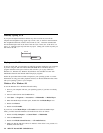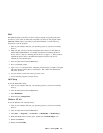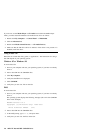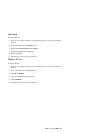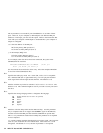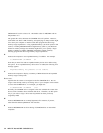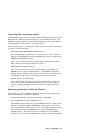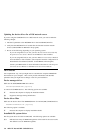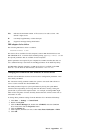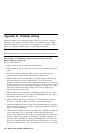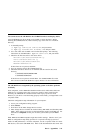CDSETUP will set this value to 10. The default value for MSCDEX with no
/M parameter is 4.
The greater this value, the better the CD-ROM drive will perform. However,
each buffer uses about 2 KB of memory, and specifying too many buffers might
slow down your computer or interfere with other programs that have large
memory-usage requirements. Using expanded memory (see the /E option in this
section) or loading MSCDEX.EXE into high memory (refer to your DOS user
manual or memory manager user manual) might allow you to specify a larger
number of buffers to enhance CD-ROM performance without adversely
affecting programs that have large memory-usage requirements.
/E
Instructs the computer to use expanded memory, if available. For example:
C:\MSCDEX.EXE /D:IBMCD1 /E
Note that you must first load an expanded memory device driver before using
this option. If no expanded-memory device driver is loaded, the following error
message appears:
Expanded Memory not present or not usable.
/V
Instructs the computer to display a summary of RAM allocation and expanded
memory usage at startup time.
/L:driveletter
Specifies the drive letter to be assigned to the first CD-ROM drive. Do not
assign a letter already used by an existing drive or your computer will be unable
to access the CD-ROM drive. For example, you might use:
C:\MSCDEX.EXE /D:IBMCD1 /L:F
Normally, the CD-ROM drive is assigned to the next available drive letter after
devices such as diskette drives and hard disk drives. Therefore, use this option
only if you wish to assign a drive letter beyond the last letter previously
assigned by DOS.
/K
Instructs MSCDEX.EXE to use Kanji (Japanese) file structures, if present,
rather than the default alphanumeric file structures.
/S
Instructs MSCDEX.EXE to allow sharing of CD-ROM drives on networked
computers.
3-4 40X-17X Internal IDE CD-ROM Drive



